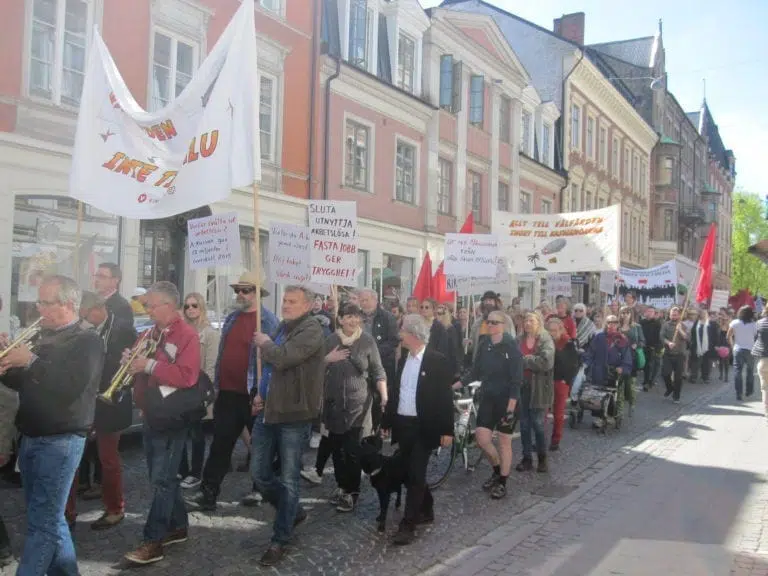In over 80 countries around the world, the first of May, or May Day, is commemorated and celebrated as a day of workers’ rights and workers’ solidarity. In many countries, the day is marked with marches and speeches, along with general festivities, which offer everyone a chance to reflect on the impact of labor regulations 
The official counterpart in the U.S., Labor Day, occurs on the first Monday of September and stands in stark contrast to the international celebration months before. While enjoyable in its own right, Labor Day is hardly more than a day routinely promised to barbecues, and erroneously marking the end of summer. This innocuous rendition of what should be a socially conscious holiday deprives us of the opportunity to reflect on the importance of workers’ rights advocacy in the past, and set goals for the future.
Surprisingly to many (including myself), the origins of May Day started here in the United States. The holiday stems back to the eight hour work day movement, which began circa 1864, when the abolition of slavery highlighted the importance of matching actual freedom with practical freedom- meaning adequate time to pursue family, education and leisure. Over twenty years later, the Federation of Organized Trades and Labor Unions (which later became the American Federation of Labor), proclaimed that “eight hours shall constitute a legal day’s labor from and after May 1, 1886.” Thus, on May 1, 1886, more than 300,000 workers across the U.S. went on a general strike in an effort to make the eight hour work day a reality.
The general strike led up to a labor rally in Chicago on May 4, 1886, where the movement erupted in violence. The day marks the 1886 Haymarket Massacre in Chicago, where police shot and killed several demonstrators after a bomb had been thrown from an unknown source. The next day, martial law was declared throughout the nation. Within months, eight labor leaders were selected to be tried, resulting in seven being sentenced to the death penalty (four of which were carried out).
In July 1889, a delegate from the American Federation of Labor recommended at a labor conference in Paris that May 1 be set aside as International Labor Day in memory of Haymarket martyrs. Over the next several years, people across the globe began demonstrating on May 1, and in many countries the day became an official holiday. May Day remains an official holiday in countries ranging from Argentina to India to Sweden—and dozens of countries in between.
Meanwhile, in 1894, in the midst of massive unrest caused by the railway boycott led by union leader Eugene Debs, Congress passed an act making the first Monday of September a holiday in honor of workers. In doing so, Congress followed the lead of several states and municipalities that had already recognized Labor Day as the first Monday of September, stemming back to 1882 in New York City. And so, May Day fell to the wayside.
Decades later, May Day was dealt its final blow in 1958 when Congress officially made May 1 ‘Loyalty Day,’ or a day to reaffirm loyalty to the U.S. This Cold War invention somehow remains alive today: President Obama- like every other president before him- again this year proclaimed May 1 to be a day to “reaffirm our allegiance to the United States of America” by “displaying the flag of the United States or pledging allegiance to the Republic for which it stands.”
Thankfully, May Day has had a strong comeback here in the U.S. in recent years through the immigrant, labor and occupy movements. While it still doesn’t compare to its international equivalents, it is important that we acknowledge the roots of this global holiday, and the intentional efforts to minimize and dilute its significance.
The eight hour work day was not codified into federal law until the Fair Labor Standards Act of 1938, the same legislation that gave us a federal minimum wage and many other worker protections.
Attorneys at Hunter Pyle Law are committed to recognizing, protecting, and enforcing the hard won achievements of the labor movement, and working to strengthen workers’ rights. If you believe your workplace rights are being violated, please contact us for a free evaluation at 510.444.4400 or mbarari@hunterpylelaw.com.
